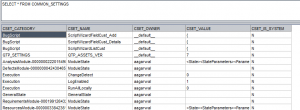After another gap, I am finally able to write. It has been a strange period on the personal, country, and then worlds’ level.
When they started talking about going Agile and championing the benefits of it, on a beautiful resort in 2001. They although coming from having different principals, frameworks, experiences, and concepts. They agreed on something.
The agreement is well known, we call it the Agile Manifesto. They put forward some commonality and one of the most important aspects that were agreed upon was “Responding to change over following a plan”.
What we understood and have been actively preaching are
- Must follow a framework
- It only applies to Team
Usually, that framework is always either Scrum or Kanban or something in between. Sometimes we are so hell-bent on following the framework we lose focus on the bigger picture. We say okay framework says this but you are not following it so you are not Agile even ignoring the fact that person or team is delivering great outcome (value to client) and responding to all kinds of changes efficiently and being market-leader.
Then going to the next step, when we talk about scaling it up, we again get stuck in trying to find a scalability framework. Altogether ignoring the cultural, organizational, people, functional and other aspects. In a 2018 publication “Agile at Scale” of “Harvard Business Review” talks about the same thing.
So, what now?

While searching for answers, I came across a concept “Disciplined Agile”. I admit I am still learning the ropes of it and will only be able to go deep once I have a proper handle on it. But on the surface, it feels more organic, natural, and less restrictive.
Disciplined agile encourages you to focus on Mindset. It encourages you to establish your own way of working, which it calls “WOW”, and to help you on the path instead of rules and regulations it shares with you guidelines that can help keep on track on the journey. It talks about experimenting, empathy towards customers, finding why we started what we started in first place, talk about leveraging all the assets on your disposal and having a system in place to help grow not become the system.
But having all said and done, there must be a framework that DA follows? Shouldn’t it be? As that is always the catch, BE AGILE they say and then They give you SCRUM or KANBAN, or LESS, or NEXUS, or Scrum at Scale.
GOOD NEWS!!!!
No DA does not want you to be FRAMEWORK driven. It champions the following mantra
“True business agility comes from freedom, not frameworks. Disciplined Agile helps you learn about your options and guides you to your best next step.”
Project Management Institute
What DA does instead if provide you with a Toolkit. That tool kit has 4 important layers, Foundation, Disciplined DevOps, Value Streams, and Disciplined Agile Enterprise.

I will talk more about DA Toolkit in next blog.
I encourage you all to explore this, as having the freedom to deliver the best value to your client in your own way should be the actual Agility. Doesn’t it make sense after all?
Important Announcement: if you are facing any issue regarding Agility, Agile Adaption in your team or organization, Test Management, project management, and/or Application Life-cycle Management, please contact at askabk@abkhalid.com. For Test & Project Management Consultancy, please reach out at abkhalid@gmail.com.


